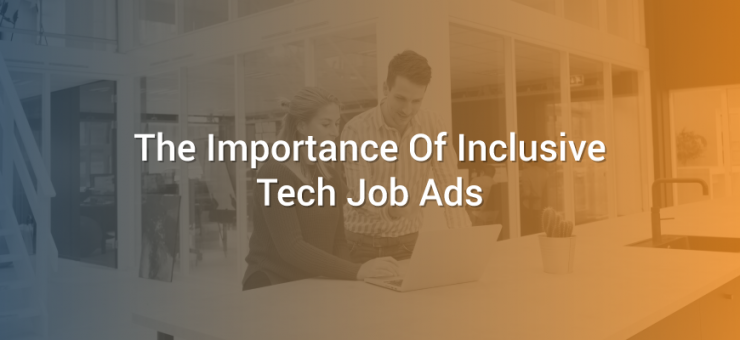Across all industries, the benefits of hiring and maintaining a diverse workforce should be abundantly clear by now. But we don’t live in an ideal world, and many companies still consider the subject as little more than a box-ticking exercise.
The benefits are not mere speculation – the research is out there. Having a diverse workforce has a positive impact on your bottom line, and companies with better representation at the board level regularly outperform their competition.
Companies that are perceived as more inclusive are more attractive to candidates of all genders and races, and that starts where many first impressions are formed – the language and wording of a firm’s job adverts.
On its face, this might sound like a small piece of a much larger issue. And if you look at the world’s leading tech companies, I’ve no doubt one or two would question whether making such changes will help make workplaces more genuinely inclusive.
But I’d ask any organisation, big or small, whether they’ve looked at or even considered the way their job ads are written in relation to inclusivity.
Given our client base, which is made up of some of the biggest names in IT, I’m quietly confident the use of inclusive language in job ads is an issue that many engage with. Even more to the point there is evidence to suggest that leaders within the tech industry are changing their hiring policies for the better.
Augmented writing platform Textio, via its co-founder and CEO Kieran Snyder, raised the question of gendered language patterns in job ads as long ago as 2016. After analysing more than 78,000 vacancies, their findings are perhaps even more relevant today given the continued, rapid growth of tech across all industries.
In essence, their research suggests the way in which a vacancy posting is worded can have a radical impact on the number of male and female applicants, and highlighted the inclusion of certain words that are viewed as masculine simply put women off.
In response, Australian firm Atlassian went a step further and put Textio’s research to the test. The result saw their female technical hires boosted by as much as 80%.
For me, Atlassian’s Global Head of Diversity Inclusion, Aubrey Blanche, hits the nail squarely on the head.
“Silicon Valley perpetuates this idea that if your code works, that’s all that matters,” she says. “But empirical research suggests otherwise.
“What you see is that 20% of technical degrees today go to women. Yet at large tech companies, fewer than 20% of their engineering staff are women. About 11% of computer science degrees in the US are given to black and Hispanic students every year, but at most tech companies, less than 5% of workers —including non-technical employees—identify as black or Hispanic.
“Those numbers say there’s something broken in the system. It’s pretty clear that our industry isn’t integrating all of the potential talent that’s out there.”
Appealing to a wide variety of potential applicants should be of paramount importance, and if companies are genuinely committed to this approach, there must be a widespread acceptance that language is the single most important factor when detailing vacancies.
We keep hearing how firms within the tech sector are struggling to address the digital skills gap, and there’s no question that this modern anomaly is affecting companies of all shapes and sizes. With this in mind, taking an inclusive approach to jobs ads and encouraging a greater range of interest becomes a no-brainer.
The imbalances referenced by Aubrey Blanche are issues at a grass-roots level, even though all of the evidence points towards the positive effect things like gender parity can have on the bottom line. Job ads should be viewed as a company’s shop window – a snapshot of a firm’s culture and a chance to outline an organisation’s ethos.
How this is achieved comes back to wording, and the kind of language used to encourage applicants to apply across the board. Until this is acknowledged and addressed from the top down, the aforementioned skills gap will remain the sector’s biggest headache.
In a report from global law firm Baker McKenzie, the message from millennials is as stark as it is crystal clear. Around 80% said they wouldn’t consider applying for a role if they believed the company in question had a gender pay gap.
Equality across race and gender has never been more essential in the job market, and if this figure tells us anything, it’s that promoting a positive employer brand from the outset and making the right first impression should be top of a firm’s priorities.
About the Author
 Danielle Ramsbottom is Director for Client Management across EMEA for Frank Recruitment Group. She began her career in recruitment 19 years ago after graduating from Leeds Metropolitan University with a degree in European Business, Spanish, and French.
Danielle Ramsbottom is Director for Client Management across EMEA for Frank Recruitment Group. She began her career in recruitment 19 years ago after graduating from Leeds Metropolitan University with a degree in European Business, Spanish, and French.
Always maintaining a keen focus on corporate client engagement and specializing in technology recruitment across all industry sectors, Danielle is also passionate about all matters relating to diversity, and takes the lead on Frank Recruitment Group’s Diversity and Inclusion strategy, both internally and across the company’s client network.











